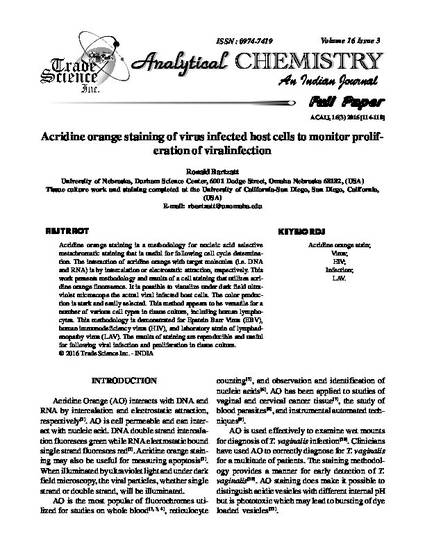
Acridine orange staining is a methodology for nucleic acid selective metachromatic staining that is useful for following cell cycle determination. The interaction of acridine orange with target molecules (i.e. DNA and RNA) is by intercalation or electrostatic attraction, respectively. This work presents methodology and results of a cell staining that utilizes acridine orange fluoresence. It is possible to visualize under dark field ultraviolet microscope the actual viral infected host cells. The color production is stark and easily selected. This method appears to be versatile for a number of various cell types in tissue culture, including human lymphocytes. This methodology is demonstrated for Epstein Barr Virus (EBV), human immunodeficiency virus (HIV), and laboratory strain of lymphadenopathy virus (LAV). The results of staining are reproducible and useful for following viral infection and proliferation in tissue culture.
Available at: http://works.bepress.com/drronald-bartzatt/10/

This article was originally published here: http://www.tsijournals.com/abstract/acridine-orange-staining-of-virus-infected-host-cells-tomonitor-proliferation-of-viralinfection-1293.html.